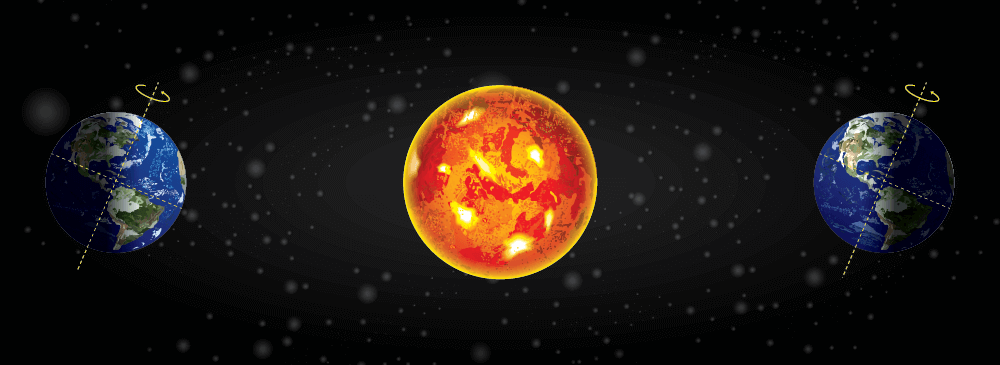This is a lesson summary. The full lesson can be viewed by purchasing an online course subscription.
Learning Objective
In this lesson we will learn how Earth’s tilt affects day and night lengths and how it causes the seasons.
Learning Outcomes
By the end of this lesson you will be able to:
- Describe Earth’s tilt.
- Explain how Earth’s tilt results in:
- Different day and night lengths for different latitudes.
- Different day and night lengths for different times of the year.
- Different seasons throughout the year.
- Opposite seasons for the northern and southern hemispheres.
- Explain how seasons are also affected by day length.
- Compare the seasons of equatorial, mid-latitude and polar regions.

(Image: pongpongching, Adobe Stock)
Lesson Summary
- Earth’s axis is on a 23.5 degree tilt relative to its orbital plane.
- This tilt always points towards the north and south celestial poles as Earth orbits the sun.
- Earth’s fixed tilt results in:
- Differences in day and night lengths for different parts of the Earth and at different times of the year.
- Seasons, which are the opposite for the northern and southern hemispheres.
- The part of the Earth facing towards the sun experiences daylight (day), while the part of the Earth facing away from the sun is experiencing darkness (night).
- Day and night lengths vary between hemispheres.
- The hemisphere tilting towards the sun experiences longer days and shorter nights.
- The hemisphere tilting away from the sun experiences shorter days and longer nights.
- The greater the distance from the equator, the greater the difference between day length and night length.
- The greater the distance from the equator, the greater the difference in daylight hours throughout the year.
- Sunlight intensity varies depending on how directly a point on Earth faces the sun.
- The more directly it faces the sun, the greater the sunlight intensity.
- For any location on Earth’s surface, the relative angle to the sun changes throughout the year, resulting in differences in sunlight intensity and, consequently, different seasons.
- One hemisphere is always receiving more direct sunlight than the other, resulting in opposite seasons for the northern and southern hemispheres.
- Seasons are also affected by day length.
- Days are longer in summer and shorter in winter, respectively increasing and decreasing the amount of sunlight energy absorbed.
- The greater the distance from the equator, the greater the variation in sunlight intensity and, consequently, the greater the differences between seasons.
- Equatorial regions experience a wet and dry season, with little temperature variation.
- Mid-latitude regions experience four distinct seasons – summer, autumn, winter and spring.
- Polar regions experience long, cold winters and short summers.

(Image: Peter mandritoiu, Adobe Stock)
(Header image: alexugalek, Adobe Stock)
